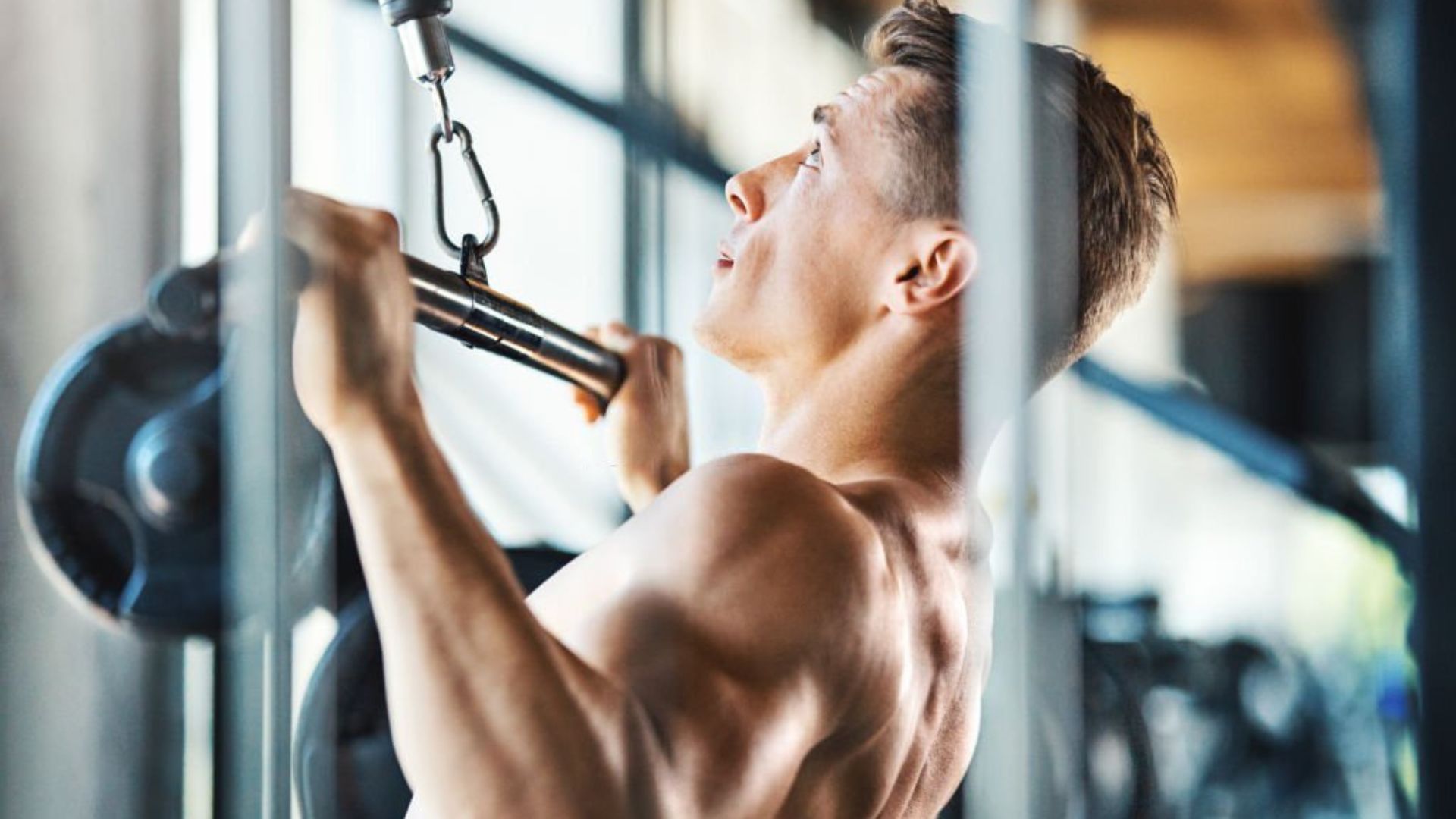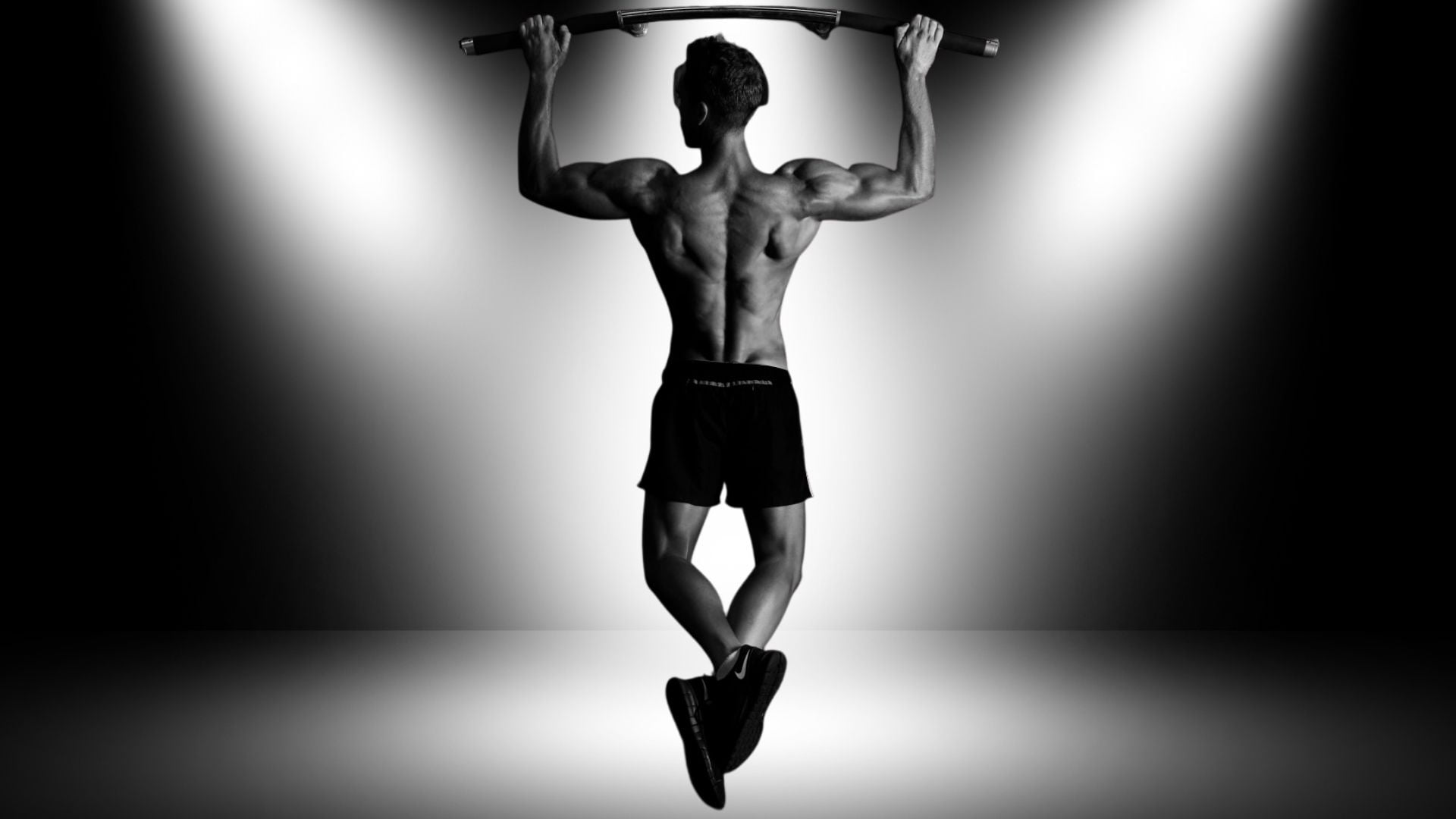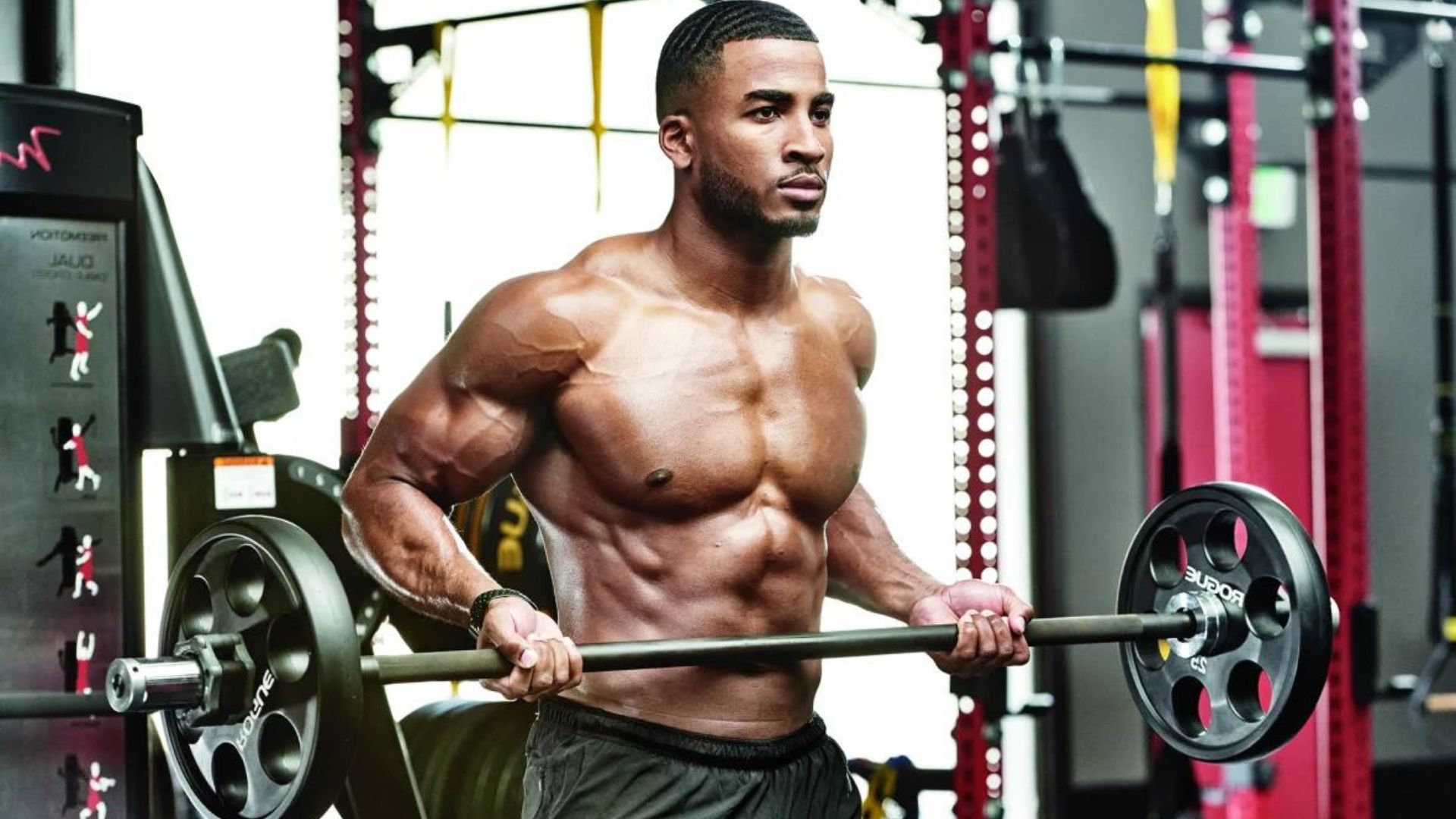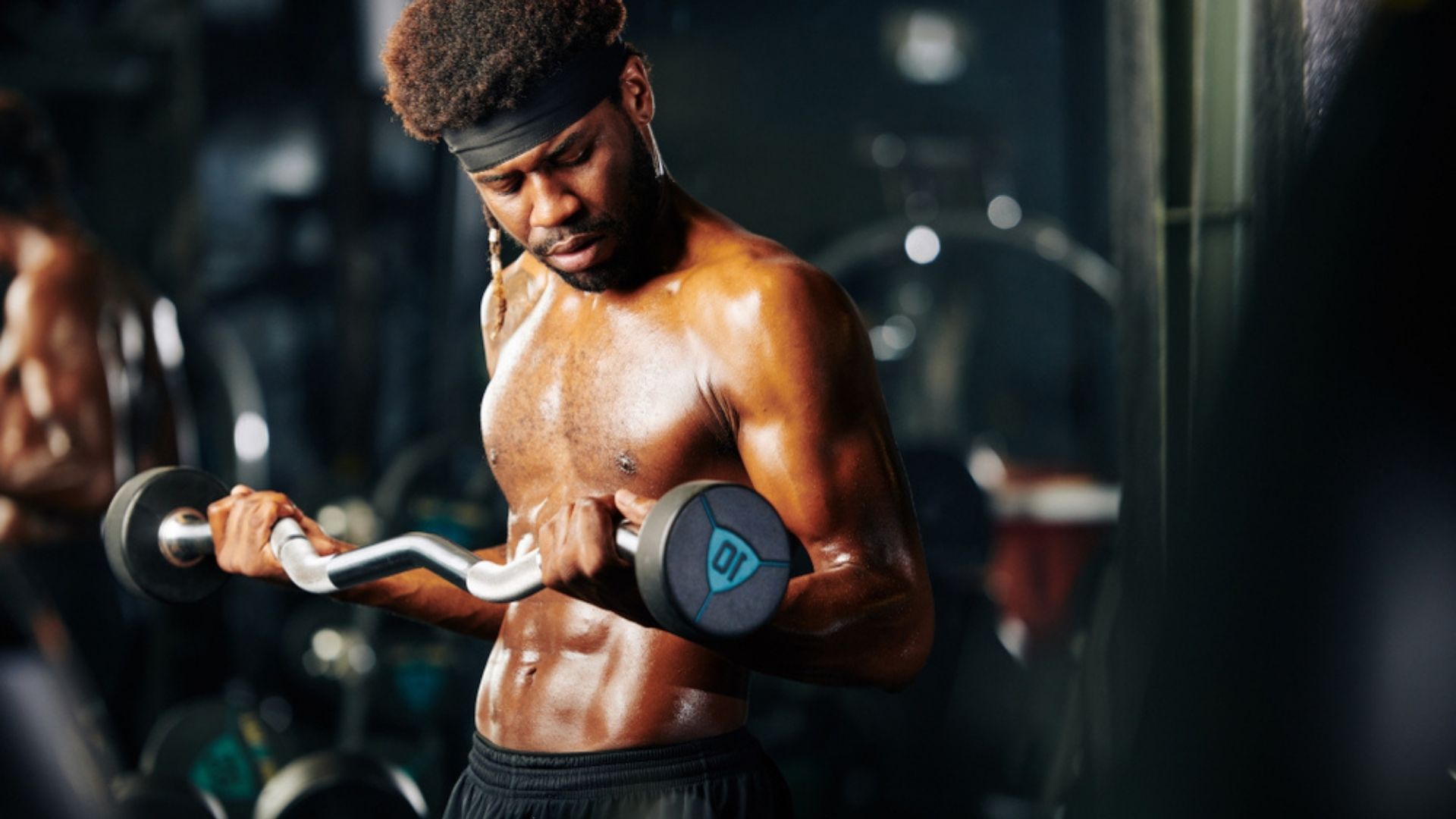
Cambered Bar Curls: Build Bigger Biceps
Are you looking for a new and challenging exercise to target your biceps and help you build bigger, stronger arms? Look no further than Cambered Bar Curls! This variation of the traditional bicep curl is designed to provide a more intense workout for your biceps while also engaging your forearms and grip strength. Here at FitGAG, we’ve put together the ultimate guide to help you get the most out of your Cambered Bar Curls. Get ready to build bigger biceps!
Exercise Information

Cambered Bar Curls, also known as Spider Curls, is a strength training exercise that targets the biceps muscles. It’s a variation of the traditional bicep curl exercise that places a greater emphasis on the biceps and minimizes the involvement of other muscles, such as the shoulders and back. Let’s dive into some general information about this exercise:
Level
Cambered Bar Curls can be performed by individuals of all fitness levels, including beginners, intermediate, and advanced. The level of difficulty can be adjusted based on the weight of the barbell used.
Equipment
To perform Cambered Bar Curls, you’ll need a Cambered Bar, which is a specially designed barbell that has a unique shape that allows for a more comfortable grip and less strain on the wrists.
Type of Exercise
Cambered Bar Curls is an isolation exercise that targets the biceps muscles. It’s a highly effective exercise for building strength and size in the biceps muscles.
Cambered Bar Curls Exercise: Working Muscles
Cambered bar curls are a popular bicep exercise that target the bicep muscles. They are performed using a cambered bar, which is a specialized weightlifting bar with a unique shape that places a greater emphasis on the biceps. In this section, we will discuss the primary and secondary muscle groups that are involved during cambered bar curls.
Primary Muscle Group: Biceps
The primary muscle group targeted during cambered bar curls is the bicep muscles. The biceps are a pair of muscles located on the front of the upper arm that are responsible for flexing the elbow joint and supinating the forearm. During cambered bar curls, the biceps are engaged to lift the weight of the bar towards the shoulder.
Secondary Muscle Group: Forearms
In addition to the biceps, cambered bar curls also engage the forearm muscles. The forearm muscles, including the brachioradialis and wrist flexors, are responsible for stabilizing the wrist and assisting with curling movements. During cambered bar curls, the forearm muscles are engaged to stabilize the wrist and assist with the movement of the bar.
By engaging both the primary and secondary muscle groups, cambered bar curls provide a comprehensive workout for the biceps and forearms. This makes them an effective exercise for building arm strength and developing a toned and muscular physique.
Stay tuned for the next section, where we will discuss the benefits of cambered bar curls.
Benefits of Cambered Bar Curls
Cambered bar curls are a variation of bicep curls that use a cambered bar, which is a curved bar that places less stress on your wrists and forearms. Here are five benefits of incorporating cambered bar curls into your fitness routine:
- Reduced Wrist and Forearm Strain: The cambered bar places less stress on your wrists and forearms compared to a straight bar, making it an ideal exercise for anyone who experiences discomfort or pain in these areas during bicep curls.
- Improved Bicep Isolation: The cambered bar curls can help you better isolate your biceps muscles, allowing for greater bicep activation and improved strength gains.
- Enhanced Muscle Recruitment: Cambered bar curls engage more muscles than traditional bicep curls, including the brachialis and brachioradialis muscles, which are important for overall arm strength and aesthetics.
- Improved Joint Stability: Cambered bar curls require greater control and stability, which can help improve joint stability in your wrists, elbows, and shoulders. This can reduce the risk of injury and improve overall joint health.
- Variation and Progression: Cambered bar curls can add variation to your bicep workouts, which can help prevent boredom and stimulate new muscle growth. Additionally, the cambered bar can be used for progressive overload by increasing weight or changing grip width.
By incorporating cambered bar curls into your fitness routine, you can enjoy these benefits and more. However, it’s important to start slowly and progress gradually to avoid injury and ensure proper form. Additionally, it’s important to incorporate a variety of exercises into your fitness routine to ensure you’re targeting all muscle groups and avoiding boredom.
Cambered Bar Curls: Step-by-Step Instructions
Cambered bar curls, also known as EZ bar curls, are a great bicep exercise that can help build strength and size in the arms. Here are the step-by-step instructions for cambered bar curls:
Starting Position:
- Stand with your feet shoulder-width apart and hold the cambered bar with an underhand grip.
- Keep your arms fully extended and your elbows close to your body.
Now, let’s move on to the step-by-step instructions for cambered bar curls:
- Slowly curl the cambered bar up towards your shoulders, keeping your elbows close to your body.
- Squeeze your biceps at the top of the curl and hold for a brief moment.
- Slowly lower the cambered bar back down to the starting position, keeping your elbows close to your body.
- Repeat the curl for the desired number of repetitions.
Repeat these steps for the desired number of repetitions.
Cambered Bar Curls – Proper Form and Technique
Cambered bar curls are an effective exercise for building and strengthening your biceps. They require a cambered or EZ bar and proper form and technique to avoid injury and achieve maximum results.
Starting Position
- Stand with your feet shoulder-width apart and hold the cambered bar with an underhand grip, with your hands shoulder-width apart.
Proper Form and Technique
- Keep Your Elbows Close: Keep your elbows close to your sides throughout the exercise to engage your biceps muscles and maintain proper form.
- Curl the Bar: Curl the bar up towards your chest, keeping your elbows stationary and your wrists straight.
- Squeeze at the Top: Squeeze your biceps muscles at the top of the movement for a second, then lower the bar back down slowly and with control.
- Keep Your Shoulders Down: Keep your shoulders down and away from your ears throughout the exercise to avoid straining your neck and upper back muscles.
- Engage Your Core: Engage your core muscles by pulling your navel towards your spine. This will help you maintain proper form and stability throughout the exercise.
- Don’t Overdo It: Do not lift the bar too high or use too much weight. A controlled motion with a moderate amount of resistance is more effective than rushing through the exercise with poor form.
- Add Variety: Once you have mastered the basic cambered bar curls, try variations such as using a close grip or a wide grip, or alternating arms between each repetition.
- Warm-Up: Always warm up your biceps, shoulders, and core muscles before performing cambered bar curls. This will help you avoid injury and improve your performance.
By following these tips, you can perform cambered bar curls with proper form and technique, building and strengthening your biceps effectively while minimizing the risk of injury. Remember to start slowly, focus on your form, and gradually increase the difficulty and intensity of the exercise over time.
Frequency and Progression: How to Get the Most Out of Your Cambered Bar Curls Workouts

Cambered bar curls are a great exercise to target the biceps and forearms. They provide a unique grip position and can be easily modified to fit any fitness level. In this section, we will discuss how to properly incorporate cambered bar curls into your workout routine and how to progress with this exercise over time.
Frequency
To see significant results with cambered bar curls, it is recommended to perform this exercise 2-3 times a week. However, it is important to allow your muscles to rest and recover between workouts to avoid overtraining and injury. You can alternate between cambered bar curls and other bicep exercises, such as dumbbell curls or chin-ups, to give your muscles a break.
Progressive Overload
To progress with cambered bar curls, it is important to gradually increase the resistance and duration of the exercise over time. One way to progress is to increase the weight on the barbell, either by adding weight plates or by using a heavier bar. Another way is to increase the number of sets or repetitions you perform with each workout. Gradually increase the resistance and sets/reps and avoid adding too much too quickly to avoid injury.
Periodization
To keep your workouts challenging and prevent plateaus, it is important to use periodization when performing cambered bar curls. This involves cycling through different phases of training, such as strength, endurance, and power. For example, you could focus on endurance for 4-6 weeks by performing higher reps with lighter weight, then switch to a power phase for 4-6 weeks by performing lower reps with heavier weight.
Mix It Up
To prevent boredom and keep your workouts fresh, it is important to mix up your cambered bar curl exercises. You can vary the grip position and width on the bar to target different areas of the biceps and forearms. You can also add in other exercises, such as hammer curls or wrist curls, to work the entire upper body.
Proper Form
Proper form is essential when performing cambered bar curls to avoid injury and get the most out of the exercise. Start by standing with your feet shoulder-width apart and grasp the cambered bar with an underhand grip, hands shoulder-width apart. Keep your core engaged and curl the bar towards your chest, keeping your elbows close to your body. Lower the bar back down and repeat for the desired number of reps.
Track Your Progress
To ensure you are making progress and staying on track with your cambered bar curl workouts, it is important to track your progress. Keep a workout journal or use a fitness app to log the weight, sets, and reps for each exercise. This will help you identify areas where you need to improve and keep you motivated to continue pushing yourself.
Incorporating cambered bar curls into your workout routine can be a great way to target the biceps and forearms. By following these tips for frequency, progressive overload, and periodization, you can ensure that you are getting the most out of your cambered bar curl workouts and reaching your fitness goals.
Mistakes of Cambered Bar Curls
Cambered bar curls are a great exercise for targeting your biceps and forearms. However, like any exercise, there are common mistakes that can reduce their effectiveness and increase the risk of injury. Here are five mistakes to avoid during cambered bar curl exercises:
- Not using proper form: Using poor form during cambered bar curls can reduce their effectiveness and increase the risk of injury. It’s essential to maintain proper alignment of the elbows, shoulders, and wrists throughout the exercise.
- Lifting too heavy: Lifting too heavy can cause poor form and increase the risk of injury. Instead, start with a lighter weight and focus on maintaining proper form throughout the exercise.
- Not engaging the core: Engaging the core is essential to maintain proper form and prevent injury during cambered bar curls. Failure to engage the core can also reduce the effectiveness of the exercise.
- Not using a full range of motion: Neglecting to use a full range of motion during cambered bar curls can reduce their effectiveness. Make sure to fully extend your arms and curl the bar as high as possible, while keeping proper form.
- Using momentum to lift the bar: Using momentum to lift the bar can reduce the effectiveness of the exercise and increase the risk of injury. Instead, focus on using controlled movements to lift the bar and engage the biceps and forearms throughout the exercise.
By avoiding these common mistakes, you can ensure that you are getting the most out of your cambered bar curl exercises while reducing the risk of injury. Remember to use proper form, start with a lighter weight, engage the core, use a full range of motion, and use controlled movements throughout the exercise. With consistent practice, you can build strong and defined biceps and forearms with the cambered bar curl exercise.
Variations of Cambered Bar Curls: Add Variety to Your Arm Workouts
Cambered bar curls are an effective exercise for targeting your biceps and forearms. However, doing the same exercise every day can become monotonous over time. Here are some variations to add variety to your arm workouts and target your upper arms from different angles:
Close Grip Cambered Bar Curls
This variation involves holding the cambered bar with a narrow grip, targeting your inner biceps more intensely.
- Grip the cambered bar with your hands close together and curl the bar towards your chest.
Wide Grip Cambered Bar Curls
This variation involves holding the cambered bar with a wider grip, targeting your outer biceps more intensely.
- Grip the cambered bar with your hands wider apart and curl the bar towards your chest.
Hammer Grip Cambered Bar Curls
This variation involves holding the cambered bar with a neutral grip, targeting your brachialis, a muscle that sits beneath your biceps.
- Grip the cambered bar with your palms facing each other and curl the bar towards your chest.
Alternating Cambered Bar Curls
This variation involves curling the cambered bar with one arm at a time, targeting each bicep individually.
- Grip the cambered bar with one hand and curl the bar towards your chest, then repeat on the other side.
Cambered Bar Preacher Curls
This variation involves using a preacher bench to isolate your biceps and increase the intensity of the exercise.
- Rest your arms on the preacher bench and grip the cambered bar with an underhand grip.
- Curl the bar towards your chest, keeping your elbows stationary.
Incorporating these variations into your cambered bar curl routine can help you avoid boredom and achieve greater gains in bicep and forearm strength and size. As always, make sure to use proper form and technique to avoid injury.
Cambered Bar Curls: 5 Alternatives to Build Bicep Strength
Cambered Bar Curls are a great exercise for building bicep strength, but if you want to mix up your routine or don’t have access to a cambered bar, there are plenty of alternatives you can try. In this section, we’ll explore five exercises that target your biceps and can help you improve your strength.
Dumbbell Curls
Dumbbell Curls are a great alternative to Cambered Bar Curls, and can be done using a pair of dumbbells.
- Start with your arms at your sides and your palms facing forward, then lift the weights towards your shoulders, squeezing your biceps.
- Lower the weights back down to the starting position, and repeat for 3-5 sets of 8-12 reps.
Dumbbell Hammer Curls
Dumbbell Hammer Curls are another great exercise for targeting your biceps.
- Start with a pair of dumbbells at your sides, with your palms facing towards each other.
- Lift the weights towards your shoulders, keeping your palms facing each other throughout the movement.
- Lower the weights back down to the starting position, and repeat for 3-5 sets of 8-12 reps.
Chin-Ups
Chin-Ups are a great exercise for targeting your biceps, as well as your back and shoulders.
- Hang from a pull-up bar with your palms facing towards you, and pull your body up towards the bar until your chin is above the bar.
- Lower back down to the starting position, and repeat for 3-5 sets of 8-12 reps.
EZ Bar Curls
EZ Bar Curls are a great alternative to Cambered Bar Curls, and target your biceps in a similar way.
- Start with your hands shoulder-width apart on the EZ bar, and lift the bar towards your shoulders, squeezing your biceps.
- Lower the bar back down to the starting position, and repeat for 3-5 sets of 8-12 reps.
Resistance Band Curls
Resistance Band Curls are a great exercise for targeting your biceps, and can be done using a resistance band.
- Stand on the band with your feet shoulder-width apart, and hold the handles with your palms facing forward.
- Lift the handles towards your shoulders, squeezing your biceps.
- Lower the handles back down to the starting position, and repeat for 3-5 sets of 8-12 reps.
Incorporating these alternatives to Cambered Bar Curls into your routine is a great way to target your biceps and improve your overall upper body strength. These exercises require little to no equipment and can be done at home or at the gym. Give them a try and see how they work for you!
Cambered Bar Curls: Tips and Tricks for Stronger Biceps

Cambered bar curls are an effective exercise that targets your biceps, the muscles located at the front of your upper arm. This exercise is a great way to build strength and definition in your biceps while also improving your grip strength. In this section, we’ll share some tips and tricks to help you perform cambered bar curls correctly and get the most out of them.
- Warm-Up: Before performing cambered bar curls, it’s essential to warm up your biceps and forearms. You can do some light cardio, such as jumping jacks or jogging in place, to get your blood flowing and increase your heart rate. You can also do some light bicep curls with light dumbbells or bands to warm up your biceps.
- Proper Form: Maintaining proper form is crucial when performing cambered bar curls. Stand with your feet shoulder-width apart, grip the cambered bar with an underhand grip, and keep your elbows close to your sides. Curl the bar up towards your chest, then lower it back down slowly. Keep your upper arms stationary and avoid swinging or using momentum to complete the exercise.
- Engage Your Core: To perform cambered bar curls correctly, you need to engage your core muscles. Take a deep breath and draw your belly button towards your spine. This action activates your core muscles and helps you maintain proper form during the exercise.
- Breathe Properly: Breathing properly is essential during cambered bar curls. Exhale as you curl the bar up towards your chest, and inhale as you lower it back down. This breathing pattern helps you maintain proper form and engage your muscles effectively.
- Vary Your Grip: Varying your grip can help target different parts of your biceps. You can try a narrow grip for a more intense workout, or a wider grip for a more comfortable grip.
- Use the Right Weight: Using the right weight is important for getting the most out of your cambered bar curls. Choose a weight that allows you to perform 10-12 reps with proper form.
- Mix it Up: Mixing up your cambered bar curls routine can help keep your workout fresh and challenging. You can try different variations, such as alternating arms, or doing sets with different grips, to target your biceps from different angles.
- Increase Reps or Sets: As you become more comfortable with cambered bar curls, you can gradually increase the number of reps or sets you perform. This will help improve your strength and endurance and challenge your muscles even further.
- Stay Consistent: Consistency is the key to success with any exercise routine. Incorporate cambered bar curls into your workout routine at least twice a week, and gradually increase the frequency as your overall fitness improves.
Incorporating these tips and tricks into your cambered bar curls routine can help you get the most out of this exercise and achieve stronger, more defined biceps. Remember to always maintain proper form, engage your core muscles, and listen to your body. With time and practice, you’ll be able to perform cambered bar curls like a pro and achieve your fitness goals.
Ultimate Workout Plan for Cambered Bar Curls
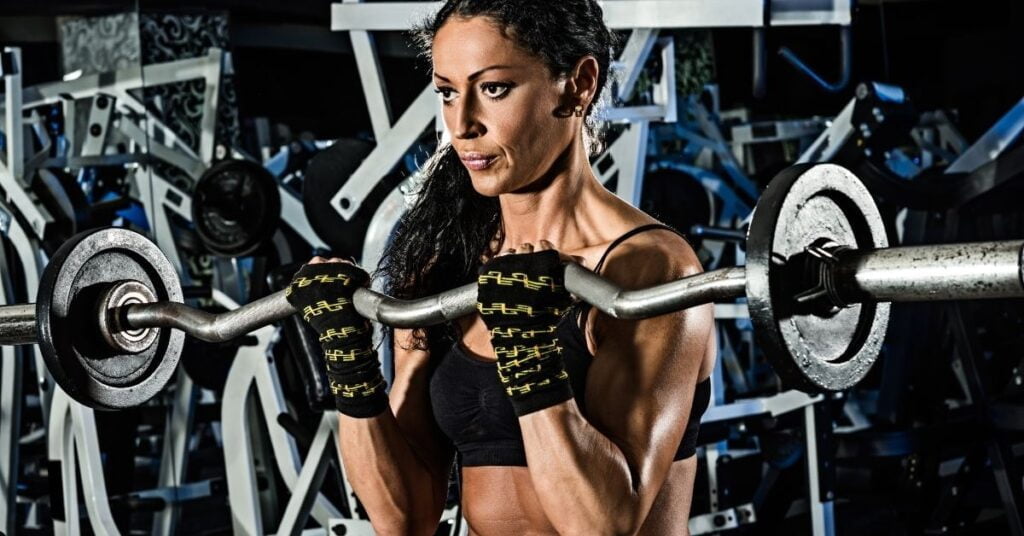
Cambered bar curls are an excellent exercise for building biceps and forearm strength. Here’s a one-week workout plan to help you incorporate Cambered Bar Curls into your routine:
Day 1: Upper Body
- Warm-up: 5-10 minutes of cardio
- Cambered Bar Curls: 3 sets x 10 reps
- Dumbbell Bench Press: 3 sets x 10 reps
- Seated Cable Rows: 3 sets x 12 reps
- Side Plank: 3 sets x 30 seconds per side
- Cool-down: 5-10 minutes of stretching
Day 2: Rest Day
Day 3: Full Body
- Warm-up: 5-10 minutes of cardio
- Cambered Bar Curls: 3 sets x 10 reps
- Squats: 3 sets x 10 reps
- Deadlifts: 3 sets x 10 reps
- Plank: 3 sets x 30 seconds
- Cool-down: 5-10 minutes of stretching
Day 4: Rest Day
Day 5: Upper Body
- Warm-up: 5-10 minutes of cardio
- Cambered Bar Curls: 3 sets x 10 reps
- Pull-ups: 3 sets x 10 reps
- One-Arm Kettlebell Press: 3 sets x 10 reps per arm
- Superman: 3 sets x 12 reps
- Cool-down: 5-10 minutes of stretching
Day 6: Rest Day
Day 7: Full Body
- Warm-up: 5-10 minutes of cardio
- Cambered Bar Curls: 3 sets x 10 reps
- Kettlebell Swings: 3 sets x 10 reps
- Lunges: 3 sets x 12 reps per leg
- Russian Twist: 3 sets x 20 reps
- Cool-down: 5-10 minutes of stretching
Remember to maintain proper form and technique when performing Cambered Bar Curls. Keep your elbows close to your body and avoid using momentum to move the weight. With consistent practice and effort, you’ll be able to improve your biceps and forearm strength with Cambered Bar Curls.
Conclusion
Cambered Bar Curls are a challenging exercise that can help you build bigger, stronger biceps. However, it’s important to use proper form and gradually increase the weight to avoid injury and get the most out of the exercise. Remember to engage your core and keep your movements slow and controlled throughout the exercise. So, if you’re ready to take your bicep workout to the next level, give Cambered Bar Curls a try with our ultimate guide. Thanks for reading, and keep fit with FitGAG!




